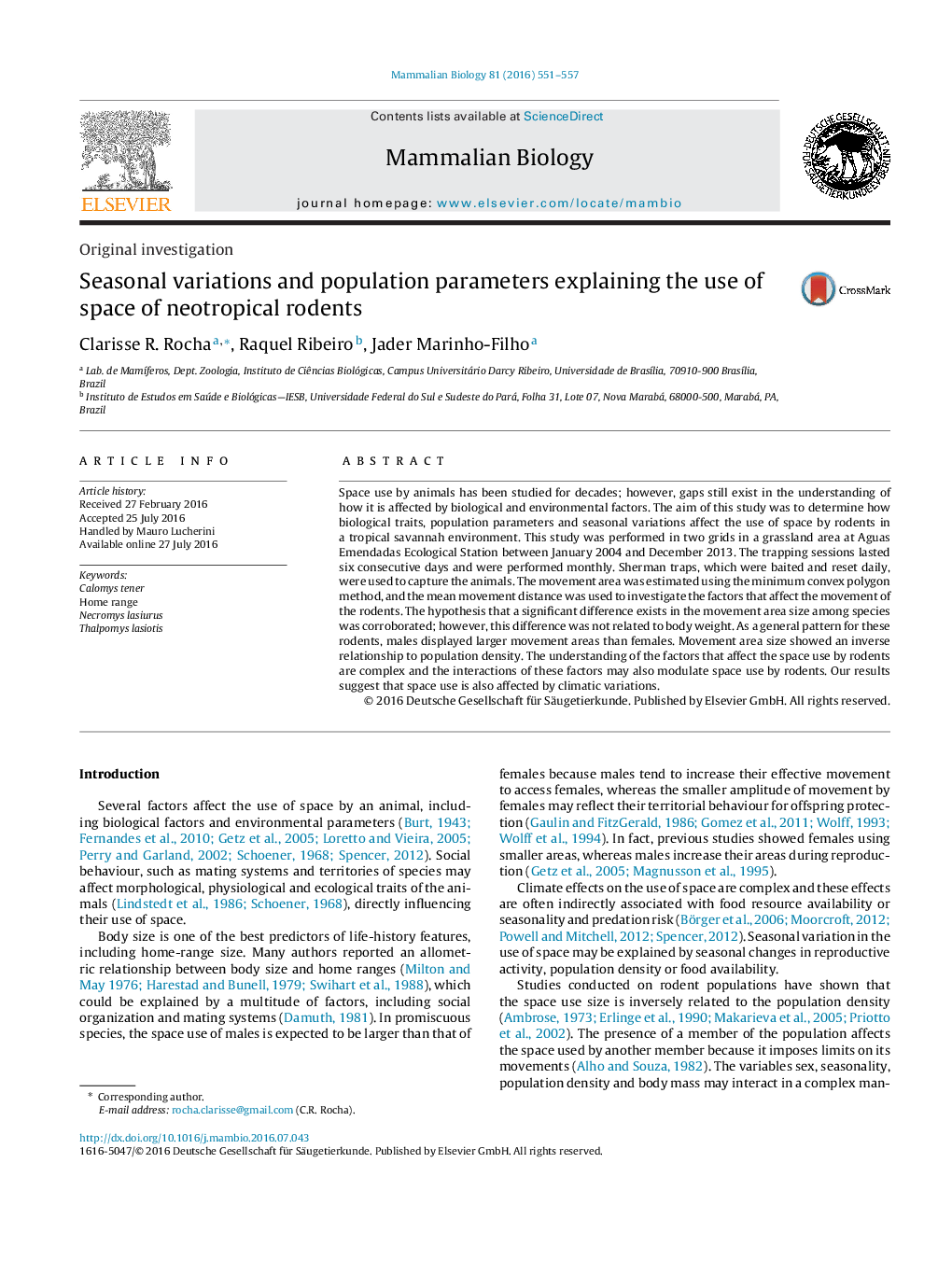| کد مقاله | کد نشریه | سال انتشار | مقاله انگلیسی | نسخه تمام متن |
|---|---|---|---|---|
| 2193274 | 1402142 | 2016 | 7 صفحه PDF | دانلود رایگان |
Space use by animals has been studied for decades; however, gaps still exist in the understanding of how it is affected by biological and environmental factors. The aim of this study was to determine how biological traits, population parameters and seasonal variations affect the use of space by rodents in a tropical savannah environment. This study was performed in two grids in a grassland area at Aguas Emendadas Ecological Station between January 2004 and December 2013. The trapping sessions lasted six consecutive days and were performed monthly. Sherman traps, which were baited and reset daily, were used to capture the animals. The movement area was estimated using the minimum convex polygon method, and the mean movement distance was used to investigate the factors that affect the movement of the rodents. The hypothesis that a significant difference exists in the movement area size among species was corroborated; however, this difference was not related to body weight. As a general pattern for these rodents, males displayed larger movement areas than females. Movement area size showed an inverse relationship to population density. The understanding of the factors that affect the space use by rodents are complex and the interactions of these factors may also modulate space use by rodents. Our results suggest that space use is also affected by climatic variations.
Journal: Mammalian Biology - Zeitschrift für Säugetierkunde - Volume 81, Issue 6, November 2016, Pages 551–557
